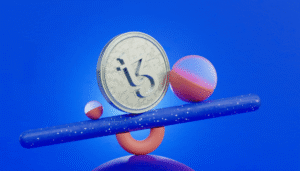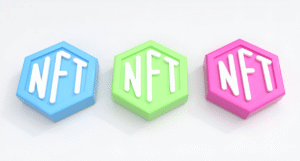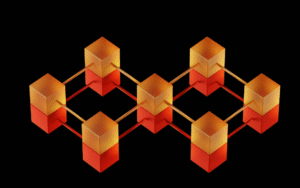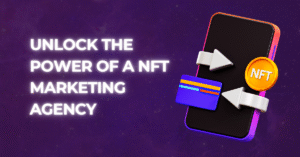Where to Market Your NFT: Comprehensive Guide for Creators

Creating an NFT is only the first step in a successful digital asset journey. Without effective marketing, even the most innovative and visually stunning NFTs can remain undiscovered in an increasingly crowded marketplace. The question of where to market your NFT has become just as crucial as the creation process itself, with the answer involving a strategic multi-channel approach rather than a single solution.
Building Your NFT Marketing Foundation
Before exploring specific marketing channels, establishing a solid foundation for your NFT project provides the necessary infrastructure for effective promotion. This foundation includes developing a coherent brand identity, creating comprehensive documentation, and building an initial community nucleus to support your marketing efforts.
At NFT Marketo, we’ve observed that creators who develop this foundation before aggressive marketing typically achieve more sustainable results than those rushing to promote underdeveloped concepts. This preparatory work provides the essential context and credibility that make subsequent marketing efforts more effective.
Discord as Community Headquarters
Discord has emerged as the definitive community platform for serious NFT projects. Unlike traditional social media, Discord allows for real-time interaction, structured conversations, and community hierarchy that supports healthy project development.
When using Discord for NFT marketing, success comes from viewing it as a community-building tool rather than a direct sales channel. The most effective Discord servers provide genuine value through educational content, networking opportunities, and insider access rather than constant sales messaging.
Key considerations for Discord marketing include:
Creating a welcoming onboarding process that clearly explains your project vision and community guidelines. First impressions significantly impact member retention rates.
Establishing specialized channels that segregate different conversation types, from technical support to collector showcases. This organization creates a more navigable experience for community members.
Implementing verification systems that protect your community from the automated bots and scammers that frequently target NFT projects. These security measures build trust with legitimate community members.
Hosting regular voice events, AMAs (Ask Me Anything sessions), and community calls that humanize your team and create stronger connections with potential collectors.
Twitter/X as Your Public Square
While Discord serves as your community headquarters, Twitter functions as your public square—the place where your project intersects with the broader NFT ecosystem. The platform’s real-time nature and focus on public conversation make it ideal for announcements, networking, and discovery.
According to Dune Analytics’ NFT Community Dashboard, over 85% of successful NFT projects maintain active Twitter presences with regular engagement. The platform’s importance in the discovery process cannot be overstated.
Effective Twitter marketing for NFTs involves several key components:
Developing a distinctive voice that reflects your project’s personality while remaining authentic and consistent. Generic corporate communication typically underperforms compared to more personal approaches.
Creating a content calendar that balances project updates, educational material, community highlights, and strategic engagement with other projects. This variety keeps your feed interesting while serving different marketing objectives.
Identifying and engaging with relevant NFT influencers who can amplify your message to established collector communities. These relationships should be cultivated authentically rather than through transactional approaches.
Utilizing Twitter Spaces for hosting discussions that position your team as thoughtful contributors to the broader NFT conversation. These audio events often reach audiences beyond your immediate follower base.
NFT Marketplaces as Sales Channels
NFT marketplaces serve as both discovery platforms and transaction venues for your digital assets. While OpenSea remains the largest general marketplace, the ecosystem now includes numerous specialized platforms catering to different art styles, blockchain preferences, and collector demographics.
Selecting the appropriate marketplaces requires understanding both their technical requirements and their cultural positioning. NFT Now’s marketplace comparison provides detailed insights into the strengths and limitations of major platforms.
Key marketplace considerations include:
Understanding fee structures that impact both your initial pricing strategy and long-term royalty expectations. These economics vary significantly between platforms.
Evaluating curation policies that determine how easily new collectors can discover your work. Some marketplaces provide algorithmic discovery while others emphasize editorial curation.
Assessing technical compatibility with your chosen blockchain, token standard, and metadata structure. These technical details significantly impact collector experience.
Analyzing the dominant aesthetic and product categories on each platform to ensure alignment with your creative direction. Cultural fit often proves more important than pure traffic numbers.
Web3 Native Advertising Platforms
As the NFT ecosystem has matured, specialized advertising platforms have emerged to connect creators with potential collectors. These Web3-native solutions offer targeting capabilities specifically designed for digital asset marketing.
Options include NFT-focused newsletter sponsorships, banner placements on tracking websites, and targeted campaigns through platforms like Adverti.io that reach users based on their on-chain activity and wallet holdings.
These specialized channels often deliver higher conversion rates than general digital advertising due to their pre-qualified audiences with established interest in digital collectibles.
Content Marketing Through Web3 Media
The expanding ecosystem of Web3-focused publications, podcasts, and YouTube channels provides numerous opportunities for NFT creators to reach engaged audiences through content marketing approaches.
Creating valuable content for these platforms—whether through guest articles, podcast appearances, or video collaborations—positions your project as a thoughtful contributor to the space while reaching audiences actively seeking NFT-related information.
Effective content marketing requires providing genuine value rather than thinly disguised promotional material. Educational content addressing common collector questions, thought leadership on industry trends, or behind-the-scenes insights into your creative process typically performs best.
Community Collaboration and Partnership Marketing
Strategic partnerships with complementary projects often create mutual marketing benefits while providing value to both communities. These collaborations range from simple social media cross-promotion to complex shared drops or interoperable functionality between NFT collections.
Successful partnership marketing begins with identifying projects with overlapping but non-identical audiences. The ideal partners offer complementary rather than competing value propositions, creating natural collaboration opportunities.
Examples include artistic collaborations between visual artists and musicians, functional integrations between metaverse projects and character collections, or shared narrative development between storytelling-focused NFT projects.
Real-World Events and Exhibition Marketing
Despite the digital nature of NFTs, physical events remain powerful marketing channels, particularly for art-focused projects. Gallery exhibitions, conference presentations, and collector meetups create tangible experiences that strengthen community bonds while attracting new interest.
The effectiveness of physical events stems from their ability to create memorable experiences that digital channels cannot fully replicate. The sensory richness of well-executed events creates stronger emotional connections to projects than purely online interactions.
Major NFT conferences like NFT.NYC or Art Basel provide structured opportunities to reach concentrated audiences of collectors, while smaller regional events often allow for deeper engagement with community members.
Email Marketing for Direct Communication
Email marketing remains one of the most effective direct communication channels for NFT projects, providing controlled messaging without algorithm dependencies. Building and maintaining a quality email list creates a valuable asset for announcement distribution and community nurturing.
Effective email marketing for NFT projects follows several best practices:
Providing exclusive content or early access opportunities that create clear value for subscribers beyond what’s available on public channels.
Segmenting your list based on engagement level, collection preferences, or community roles to deliver more relevant communications.
Maintaining consistent communication cadence that keeps your project top-of-mind without overwhelming subscribers’ inboxes.
Creating mobile-optimized designs that work effectively across devices, recognizing that many collectors check email primarily on smartphones.
Influencer Marketing Considerations
Influencer marketing represents one of the most visible but also most complex NFT marketing channels. While successful collaborations can rapidly expand project awareness, poorly executed partnerships can damage credibility and drain marketing budgets.
Evaluating potential influencer partnerships requires looking beyond raw follower counts to assess engagement quality, audience composition, and authentic interest in your project category. The most effective collaborations typically involve influencers with genuine interest in your creative approach rather than those merely accepting payment for promotion.
Transparent disclosure of paid relationships protects both creators and influencers from regulatory concerns while maintaining community trust. The NFT space has developed increasingly sophisticated abilities to identify undisclosed promotional relationships.
Analytics-Driven Marketing Optimization
Regardless of which marketing channels you prioritize, implementing comprehensive analytics allows for continuous optimization based on performance data rather than assumptions. Modern NFT marketing requires tracking both on-chain activities like minting and trading as well as off-chain engagement metrics from social platforms.
Tools like Discord analytics bots, Twitter’s native analytics, and specialized NFT analytics platforms provide the data necessary to identify your most effective channels and refine your approach over time.
This analytical approach enables resource allocation based on demonstrated results rather than conventional wisdom about where NFTs “should” be marketed. The optimal channel mix varies significantly between projects based on their specific audience and value proposition.
Conclusion
The question of where to market your NFT has no universal answer, as effective marketing strategies must align with your specific project goals, target audience, and creative direction. However, a thoughtful multi-channel approach built on authentic community engagement consistently outperforms single-channel strategies or purely promotional approaches.
By viewing marketing as an extension of your creative vision rather than a separate commercial activity, you create more coherent messaging that resonates with potential collectors. This integrated approach builds sustainable communities rather than just driving short-term sales.
For personalized guidance on developing a marketing strategy tailored to your specific NFT project, visit NFT Marketo for comprehensive marketing services designed for creators at every stage of their NFT journey.





